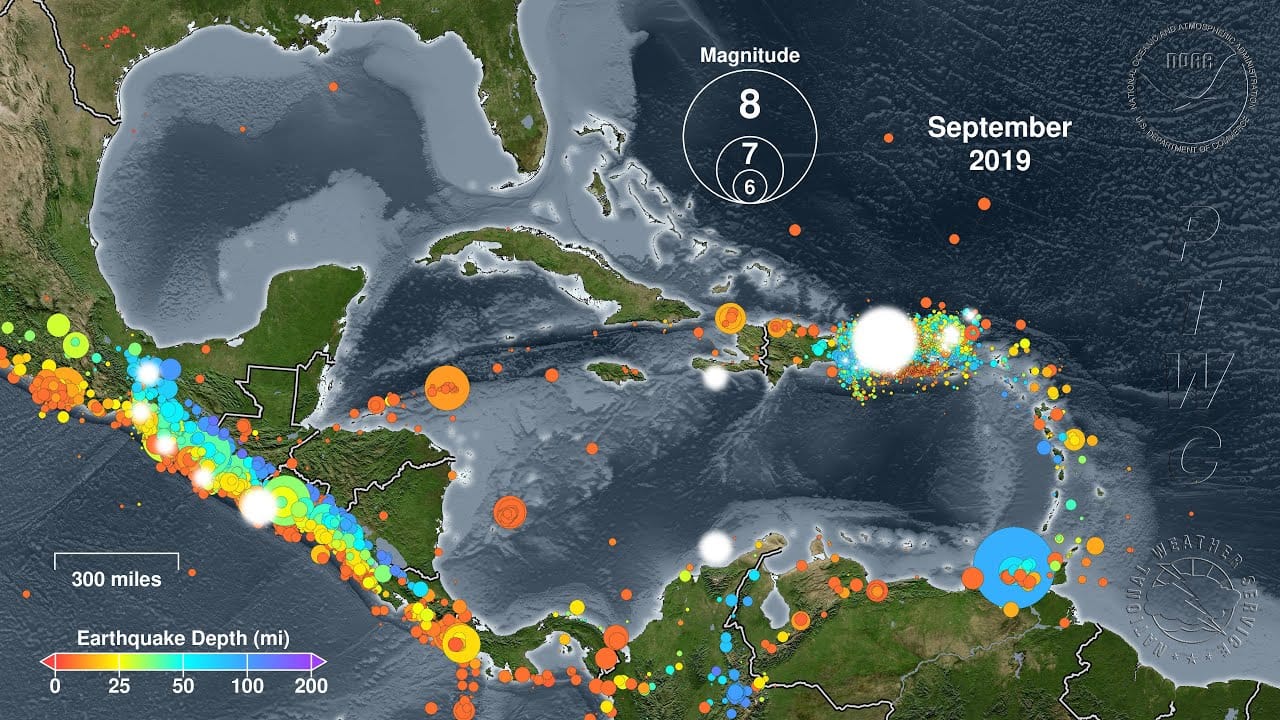A massive 7.6-magnitude earthquake shook the Caribbean region recently, causing widespread alarm and activating tsunami warning systems across a dozen nations. The earthquake, reported as one of the most significant seismic events in the area in recent years, was recorded at a depth of 10 kilometers under the Caribbean Sea, with its epicenter north of Honduras and southwest of the Cayman Islands. Despite initial fears of wave surges threatening coastal communities, the tsunami alerts were later declared unnecessary and canceled after further monitoring and assessments.
The earthquake occurred late in the evening local time. Coastal regions, especially those in close proximity to the epicenter such as parts of Honduras, Jamaica, and the Cayman Islands, reported experiencing tremors strong enough to stir widespread alarm. Residents were advised to evacuate low-lying areas while officials assessed the situation and monitored for potential aftershocks or wave activity.
The United States Geological Survey (USGS) and local weather agencies stepped into action immediately following the quake’s occurrence. Tsunami alerts, including warnings and advisories, were initially issued for various countries and territories around the Caribbean basin. Jamaica, Cuba, Puerto Rico, and the Virgin Islands were among the regions where authorities were on high alert, urging citizens to remain vigilant and follow evacuation protocols if necessary.
Initial tsunami models suggested the possibility of wave surges caused by the earthquake, with the potential to reach heights of up to three meters in some locations. Cuban authorities specifically warned of waves capable of approaching coastal regions north of the country. Emergency measures were quickly put in place, with officials redirecting resources to critical areas. Local governments ensured tsunami sirens were operational and emergency communications channels were opened to keep citizens informed.
However, as minutes turned into hours, the perceived threat from the earthquake appeared to subside. The Pacific Tsunami Warning Center and other seismic monitoring agencies reported no evidence of significant wave surges from the event. Meteorological agencies also confirmed that the characteristics of the earthquake, despite its strength, were inadequate to generate the type of displacement in ocean water needed to produce a tsunami. As a result, all tsunami warnings, watches, and advisories were officially canceled and coastal residents were given the all-clear to return to their homes.
Despite the cancellation of the warnings, geological experts highlighted the importance of swift action under such circumstances. Tsunami warnings, even if later ruled unnecessary, are an essential precautionary measure in the aftermath of strong underwater earthquakes. Past events have demonstrated the catastrophic consequences of tsunamis in similarly vulnerable regions, making timely warnings a critical part of disaster response.
For the countries directly impacted by the earthquake’s tremors, the focus has now shifted to assessing the full extent of the quake’s immediate aftermath. Local authorities in Honduras and surrounding regions have reported some structural damage, particularly in older buildings and infrastructure. Minor injuries have been noted in some cases, largely related to debris falling during the tremors. However, no fatalities were reported at the time of writing.
The earthquake serves as a reminder of the seismic activity prevalent in the region, which lies along significant tectonic plate boundaries. The Caribbean Plate interacts with surrounding plates such as the North American and South American Plates, making it prone to earthquakes and associated risks like tsunamis. Experts have advised governments and communities in the region to continue strengthening their disaster preparedness programs, given the unpredictability and power of such natural events.
The response to this earthquake demonstrated the effectiveness of international cooperation and advanced monitoring technologies. Countries across the Caribbean basin relied on transnational communication systems and shared data from agencies such as the USGS and the National Oceanic and Atmospheric Administration (NOAA). Modern instrumentation allowed for precise calculation of the earthquake’s magnitude and for predictive models regarding potential tsunamis to be made swiftly.
While the region was fortunate to avoid a deadly tsunami on this occasion, the event emphasized the volatility of nature and the importance of preparedness. Residents in affected areas are being urged to remain cautious in the short term, as significant earthquakes often result in strong aftershocks. Scientists will continue to monitor seismic activity in order to provide timely updates should any further risks emerge.
This earthquake event will also likely renew conversations about the need for long-term investments in disaster management infrastructure in the Caribbean. Early warning systems, more resilient building codes, and community education programs are viewed as key areas requiring attention and funding.
In conclusion, the Caribbean region witnessed a significant seismic occurrence that, while disruptive, did not result in the catastrophic consequences some feared. Thanks to the coordination of local governments, agencies, and international scientific entities, the potential disaster was effectively managed, ensuring the safety of millions of residents. Authorities are now prioritizing recovery efforts and studies to better understand and prepare for future seismic events.



